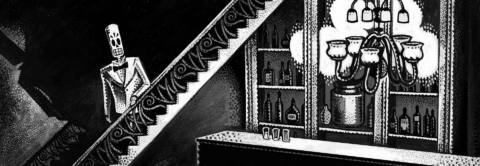
Death. “The greatest of all human blessings” according to Socrates, “a very dull and dreary affair” to W. Somerset Maugham, and “always around the corner” as observed by Carter Burwell. But, ultimately, the inevitability of all living beings. It is the one experience that is guaranteed and that the human brain will never truly know fully: both accepted and incomparably frightening.
Death has been explored in countless mediums since humanity first began to explore artistic expression and creation, often drawing on commonly recognised beliefs or customs and the representation of the soul. In gaming, the act of death and being dead has often been utilised as a theme, a conclusion, a key plot element, or a shocking twist. And games that explore the state of being dead, while adding original tweaks, even now still tend to veer towards spirits, ghosts, and similarly ethereal beings. This was certainly the go-to in the ’90s during the growth of 3D gaming, following that commonly recognised imagery. Particular cultures were rarely explored. Until 1998, when Tim Schafer’s second solo venture crossed over and hit the stores.
Land of the Dead noir adventure Grim Fandango was an instant hit with both critics and players alike, taking home a mountain of gaming awards in 1998. Almost 25 years later and it is still often regarded as one of the greatest video games of all time. If there’s a list, it’s a good bet that Grim Fandango will be on it. Art direction, dialogue, puzzles, all these and more were noted as points of excellence, as well as its specially created GrimE engine. However, despite these bountiful accolades, the initial profits sadly did not echo the praise. In a kind of bittersweet irony, Grim Fandango appeared to signal the decline – or death – of the adventure game genre. But, considering the ever-growing number of indie adventure titles and the release of Grim Fandango Remastered in 2015, it also signalled its own cult classic status, and the rebirth of the genre. Impossible, one would imagine. But Tim Schafer and LucasArts managed to achieve this by tapping into something that is still only just being properly realised: the respectful exploration of culture.






